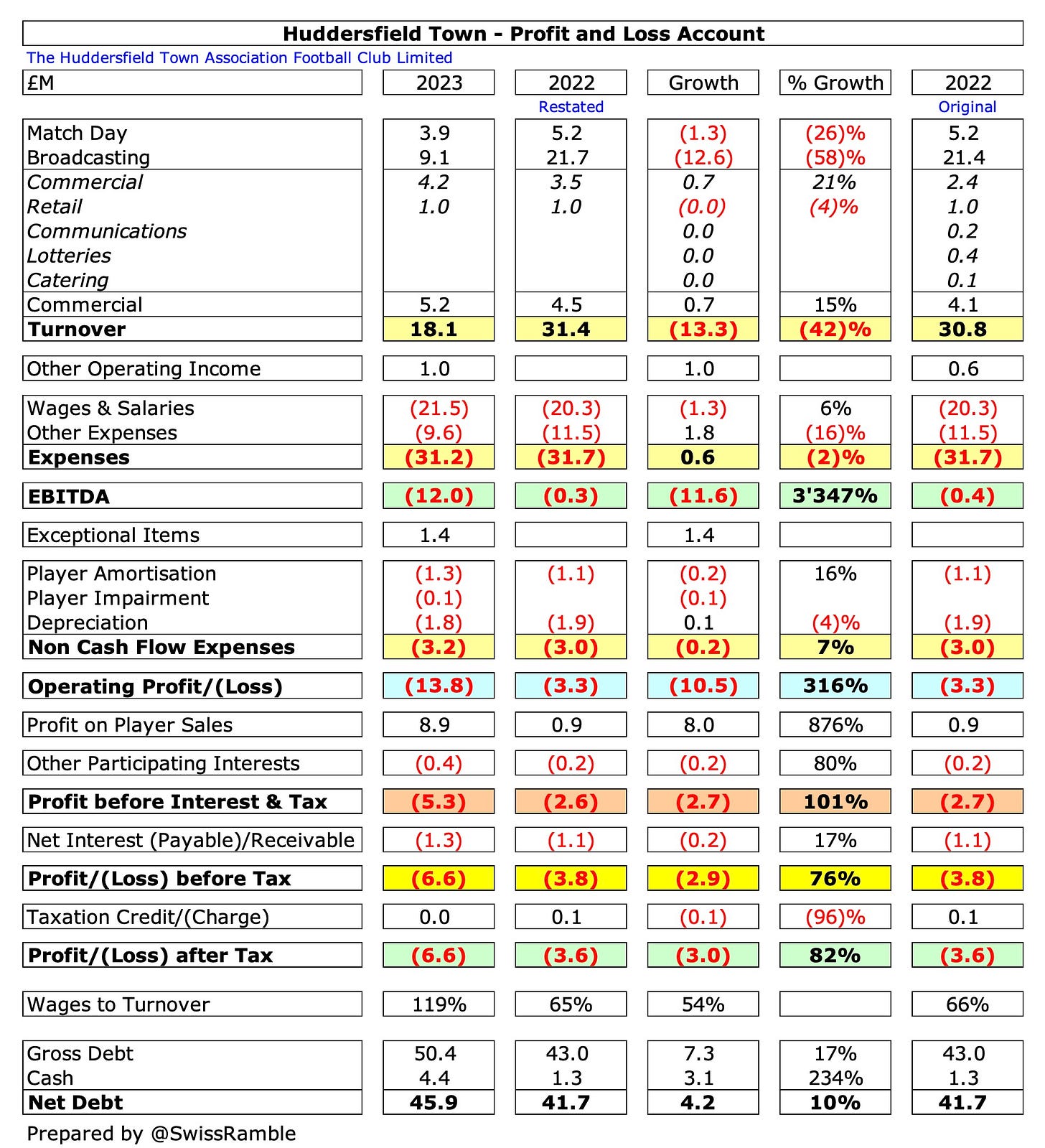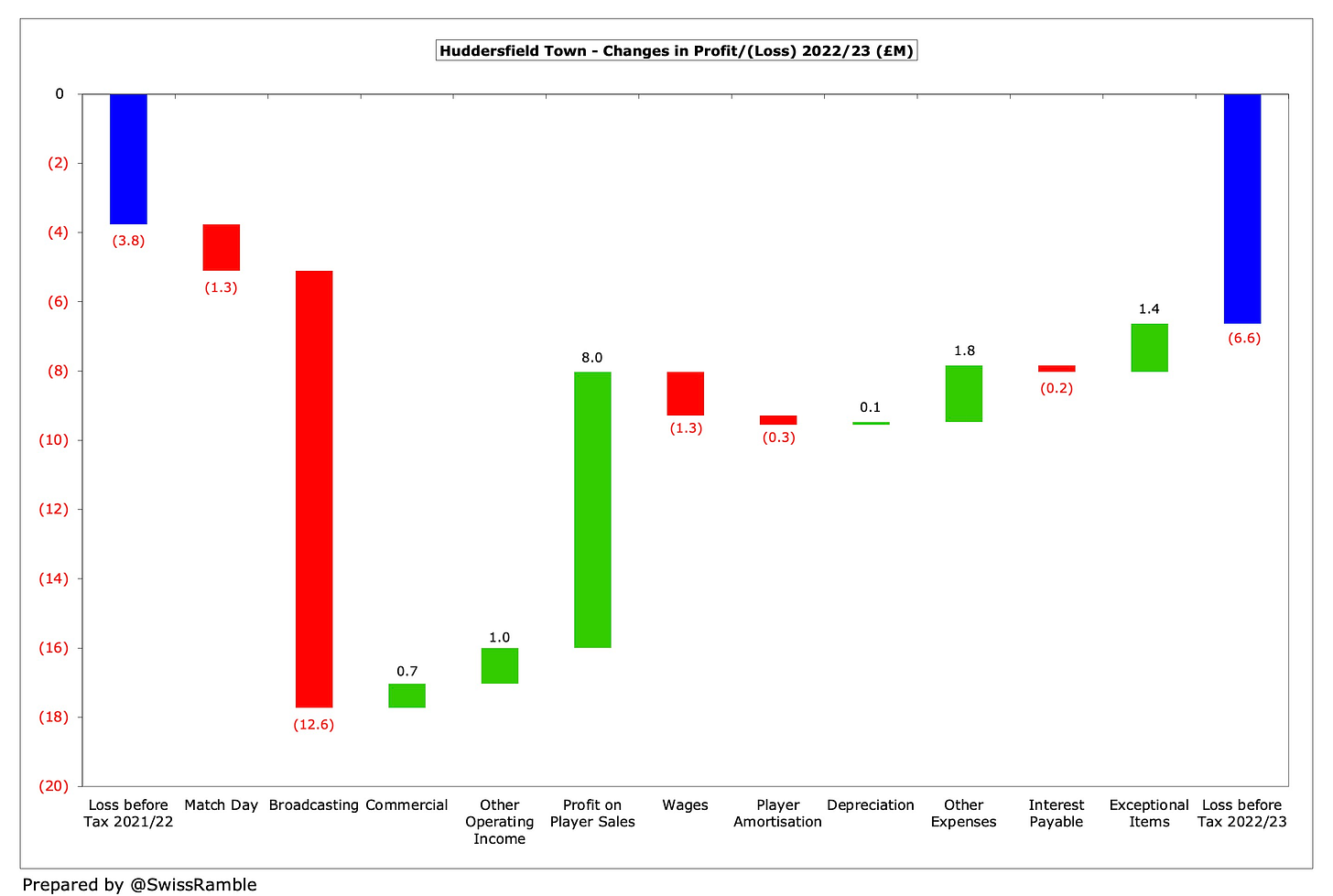There has been a lot of change at Huddersfield Town in the last few years, though it’s fair to say that the trend has not been their friend, as the club was relegated from the Championship to League One last season, the first time that the club has been in England’s third tier since 2011/12.
This represented a steep decline for the Terriers after spending two seasons in the Premier League (2017/18 and 2018/19) just five years before. Indeed, it was only two years since Town enjoyed a fantastic season under Carlos Corberan, when they finished 3rd in the Championship, thus securing a place in the play-offs, before losing to Nottingham Forest in the final.
As owner Kevin Nagle put it when describing the 2023/24 season (with a fair degree of understatement), “On the pitch, we did not perform very well.”
Ownership
Nagle is Huddersfield Town’s current owner, having acquired the club in March 2023. He is an American businessman, who is also owner of Sacramento Republic, a USL Championship team.
In fact, there has been a great deal of change in the club’s ownership in the past few years, which is almost certainly one of the reasons for Town’s issues.
Long standing custodian Dean Hoyle had sold a 75% stake in Huddersfield Town to Phil Hodgkinson’s Pure Sports Consultancy Ltd in 2019, but the new owner’s main business interests were placed into administration in November 2021. Although this did not directly affect the club, it did lead to the return of the former owner.
Hoyle stepped back in to oversee the day to day running of the club and “provide urgent financial support”, even though he was still the minority shareholder, but he had to once again take a step back in October 2022 due to poor health.
Hodgkinson’s 75% stake was sold back to Hoyle in March 2023, so he once again held 100% of the shares, though he immediately sold this 100% shareholding to Nagle.
Events on the pitch have not been great since Nagle’s arrival, but in fairness it was reported that the takeover was needed to avoid the club entering administration.
Managerial Changes
Town have also not been helped by numerous changes in manager in the last couple of years.
Corberan left in July 2022, believing that the club would not match his ambitions. The Spaniard was replaced by Danny Schofield, but he only survived three months.
He was succeeded as permanent manager by Mark Fotheringham, who did not last much longer, before Neil Warnock was tempted out of retirement in February 2023. The veteran manager successfully guided Town to safety, but he also exited stage left after just eight matches the following season.
Nagle hired former Sheffield Wednesday manager Darren Moore, but the big man went after only four months, eventually replaced by former Schalke and FC Zurich coach Andre Breitenreiter, who left by mutual consent following the relegation to League One.
Former Swansea City boss Michael Duff is now in the hotseat, which means that Town have had no fewer than seven managers since July 2022, not including caretakers.
This lack of continuity is hardly conducive to success on the pitch, as vastly different playing styles have been adopted.
So there has clearly been a huge amount of change at Huddersfield Town in the last couple of years, but do the club’s finances also shed some light on what went wrong?
Admittedly, cause and effect can be a bit mixed up here, e.g. deteriorating performance on the pitch leads to lower income, which drives a further decline, but there are some clues in the accounts, even if the most recent available are from the 2022/23 season.
Profit/(Loss) 2022/23
In 2022/23, when Town finished 18th in the Championship, the pre-tax loss widened from £3.8m to £6.6m, as revenue dropped by £13.3m (42%) from £31.4m to £18.1m, though this was partly offset by profit from player sales rising £8.0m from £0.9m to £8.9m.
In addition, the bottom line was boosted by a couple of once-offs: £1.4m financing gains and a £1.0m COVID insurance claim.
Despite the significant reduction in revenue, operating expenses were only cut by £0.4m (1%).
The main reason for Town’s revenue decrease was broadcasting, which more than halved, falling by £12.6m from £21.7m to £9.1m after parachute payments ended. In addition, match day dropped £1.3m (26%) from £5.2m to £3.9m, though commercial rose £0.7m (15%) from £4.5m to £5.2m.
Town increased their staff costs a little in 2022/23, as wages rose £1.3m (6%) from £20.2m to £21.5m, while player amortisation was up £0.2m (16%) from £1.1m to £1.3m. However, other expenses reduced by £1.8m (16%) to £9.6m.
Despite the increase, Town’s £6.6m loss was actually the seventh best result in the division, significantly better than many other clubs.
Keep reading with a 7-day free trial
Subscribe to The Swiss Ramble to keep reading this post and get 7 days of free access to the full post archives.







